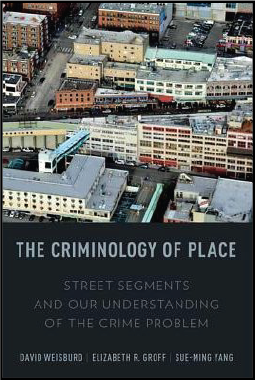
The empirical observation that a small number of micro places generate the bulk of urban crime problems has become a criminological axiom. These micro places, commonly referred to as “hot spots” of crime, have been defined as clusters of street addresses, groupings of street blocks, and collections of particular street intersections and street segments. High-activity crime places have been found in neighborhoods characterized by both low and high levels of social disadvantage. More recently, researchers have examined whether the concentration of crime at particular places is stable over time. The stability of crime at hot spots reinforces the logic that underlies place-based prevention strategies. Without intervention, crime hot spots are not likely to disappear in short time periods. Concentrating crime prevention resources on such places makes good sense both for short term and long term gains.
In "The Criminology of Place: Street Segments and Our Understanding of the Crime Problem," criminologists David Weisburd, Elizabeth Groff, and Sue-Ming Yang provide the fullest account to date on how very small places powerfully influence levels of crime across urban landscapes and, more importantly, make concrete suggestions on what society should be doing to address these persistently problematic locations. For most of the last century, criminologists have generally focused on understanding why particular individuals become involved in criminal activity or why particular neighborhoods experienced elevated levels of crime. Academic interest in the criminology of a place developed from research suggesting that micro-level variation in crime existed within communities and the attributes of specific places were important in understanding the concentration of crime at particular locations. Weisburd, Groff, and Yang draw upon existing criminological theory and synthesize new theoretical insights to show that crime is powerfully coupled with specific small places.
